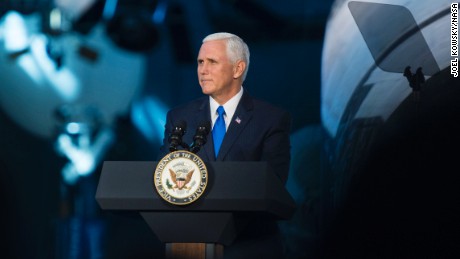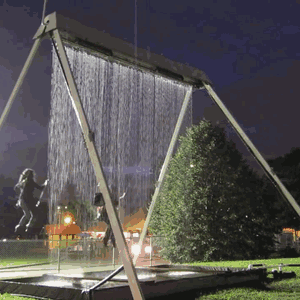Vice President Mike Pence on Tuesday called for landing astronauts on the moon within five years, an accelerated pace that would aim to put Americans on the lunar south pole. Pence said NASA needs to achieve that goal "by any means necessary." Speaking at a meeting of the National Space Council in Huntsville, Alabama, he said NASA rockets and lunar landers will be replaced by private craft, if required. "It's time to redouble our effort," he said. "It can happen, but it will not happen unless we increase the pace." Now, the earliest possible landing on the moon by NASA isn't until 2028, Pence said. He acknowledged talent — and money — will be necessary to pull it off earlier.
Pence warned that if NASA can't put astronauts on the moon by 2024, "we need to change the organization, not the mission." The space agency must transform into a leaner, more accountable and more agile organization, and must adopt an "all-hands-on-deck approach," he said. NASA Administrator Jim Bridenstine assured Pence that NASA will do everything possible to meet the deadline. Some outside experts were skeptical of the new timeline. This summer marks the 50th anniversary of the first manned moon landing. Since Apollo astronauts last walked on the moon in 1972, no country has made a serious attempt to send humans back to the lunar surface. For decades, NASA has flip-flopped between the moon and Mars, a victim of changing presidential administrations. More recently, President Barack Obama targeted Mars as astronauts' next big destination, while President Donald Trump has favored the moon.
Credits:
https://kmox.radio.com/articles/vice-president-mike-pence-called-landing-astronauts-moon












